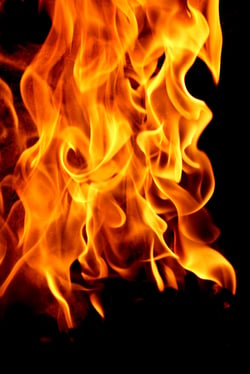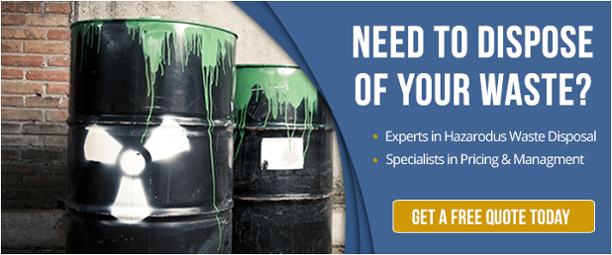For those companies that work with dangerous goods and materials, it becomes much more difficult to manage when they are flammable and combustible liquids that fall into hazard class 3. .
Because flammable and combustible liquids burn, they present a greater risk of personal injury and property damage. That is why there are regulations that govern their labeling, storage and modes of transportation – air, highway, rail and water.
It is important to know whether you are working with these liquids and what you need to do to make sure you are in compliance with federal and state regulations.
How Flammable Liquids Are Categorized
Flammable liquids are separated into two subcategories by their makeup and flashpoint.
Class 3 “Flammable” liquids are those liquids with a flashpoint of not more than 140 degrees Fahrenheit, or any material in a liquid phase with a flash point at or above 100 °F that is intentionally heated and offered for transportation or transported at or above its flash point in a bulk packaging. Examples of Class 3 Flammable Liquids include acetaldehyde, petroleum ether, and ethyl chloride.
Class 3 “Combustible” liquids are those with a flashpoint above 100 degrees and below 200 degrees Fahrenheit. Acetone, benzene, and methyl alcohol are all examples of Class 3 Combustible Liquids.
What Is A Flashpoint?
 A flashpoint is the temperature at which a particular organic compound gives off sufficient vapor to ignite in air. So, released vapor is the true danger of flammable liquids. Highly volatile liquids, those that are quick to vaporize in various conditions, present the greatest potential danger.
A flashpoint is the temperature at which a particular organic compound gives off sufficient vapor to ignite in air. So, released vapor is the true danger of flammable liquids. Highly volatile liquids, those that are quick to vaporize in various conditions, present the greatest potential danger.
A flammable liquid is a liquid having a flash point of not more than 60 °C (140 °F), or any material in a liquid phase with a flash point at or above 37.8 °C (100 °F) that is intentionally heated and offered for transportation or transported at or above its flash point in a bulk packaging.
A combustible liquid is a liquid having a has a flash point above 60.5 °C (141 °F) and below 93 °C (200 °F).
Because of these flashpoints, they are labeled as Class 3 Hazardous Waste by the US Department of Transportation.
Does The Liquid Itself Burn?
Flammable and combustible liquids themselves do not burn. It is the mixture of the vapors they produce coming into contact with air that actually burns.
The rate at which a liquid produces flammable vapors depends upon its vapor pressure. And, the vaporization rate increases as the temperature increases.
Therefore, flammable and combustible liquids are more hazardous at elevated temperatures than at room temperature.
What Is The Danger Of Flashback?
Vapors can flow from open liquid containers containing flammables and combustibles. These vapors from flammable and combustible liquids are heavier than air, so they collect in low areas like sewers, pits, trenches and basements if ventilation is not adequate.
A vapor trail can spread far away from the liquid. If it comes in contact with an ignition source, the fire produced can flash back all the way to the liquid.
Because of this vapor trail, flashback and fire can happen even if the actual liquid is hundreds of feet or several floors away.
Storage Restrictions And Guidelines
 Because their vapors ignite and burn easily, flammable and combustible liquids have strict storage requirements.
Because their vapors ignite and burn easily, flammable and combustible liquids have strict storage requirements.
OSHA and the US Department of Transportation offer a long list of requirements for Class 3 substance storage.
Here are some basic storage requirements:
1. Only approved containers and portable tanks shall be used for storage and handling of flammable liquids. Approved safety cans or Department of Transportation approved containers shall be used for the handling and use of flammable liquids in quantities of 5 gallons or less, except that this shall not apply to those flammable liquid materials which are highly viscid (extremely hard to pour), which may be used and handled in original shipping containers. For quantities of one gallon or less, the original container may be used, for storage, use and handling of flammable liquids.
2. Flammable liquids shall not be stored in areas used for exits, stairways, or normally used for the safe passage of people.
3. No more than 25 gallons of flammable liquids shall be stored in a room outside of an approved storage cabinet.
4. Quantities of flammable liquid in excess of 25 gallons shall be stored in an acceptable or approved metal or wood cabinet.
5. Cabinets shall be labeled in conspicuous lettering, "Flammable-Keep Away from Open Flames."
6. Not more than 60 gallons of Class 3 flammable liquids shall be stored in any one storage cabinet. Not more than three such cabinets may be located in a single storage area. Quantities in excess of this shall be stored in an inside storage room.
7. Inside storage rooms shall be constructed to meet the required fire-resistive rating for their use. Such construction shall comply with the test specifications set forth in Standard Methods of Fire Test of Building Construction and Material, NFPA 251-1969.
You can find more storage requirements on this OSHA website page.
Transportation Restrictions and Guidelines
Because of the dangerous nature of flammable liquids, the regulations for transporting and disposing of Class 3 materials are quite extensive. Some of the general requirements include:
1. Only approved portable tanks and containers may be used to store and transport class 3 flammable liquids.
2. Portable tanks must include provisions for emergency vents that can be used to decrease internal pressure under fire exposure conditions. They must also have at least one pressure-activated vent.
3. Small containers holding less than 8 gallons of flammable liquid and with a weight less than 440 pounds can be transported by anyone who has undergone general hazmat training.
4. Shipments must include MSDS sheets and must be appropriately labeled as “Gasoline” or “Flammable Liquid.”
5. Larger shipments must include MSDS sheets, an emergency response guide and hazmat bill of lading.
6. Drivers who transport more than 119 gallons or more than 1,001 pounds of class 3 dangerous goods must also have a commercial driver’s license, or CDL. Extensive driver training is also highly recommended for those who carry large amounts.
7. Shippers who transport containers that hold less than 8 gallons and weigh more than 440 pounds but less than 1,001 pounds and containers that hold between 8 and 119 gallons and weigh less than 1,001 pounds must complete emergency response guide training as well as HM-126F training.
8. Dangerous Good placards are required by 49 CFR 172.500 as well as the International Maritime Organization. Such placards must be affixed to highway, rail and ocean containers.
Making Sure You Are In Compliance
If your business works with Class 3 flammables, it is important to make sure that they are labeled, stored, transported and disposed of properly.
We recommend working with an experienced hazardous materials disposal company to make sure you are in compliance with all state and federal regulations, so you can avoid not only hefty fines but also liability from danger to property and injury to your employees and others.


Comment